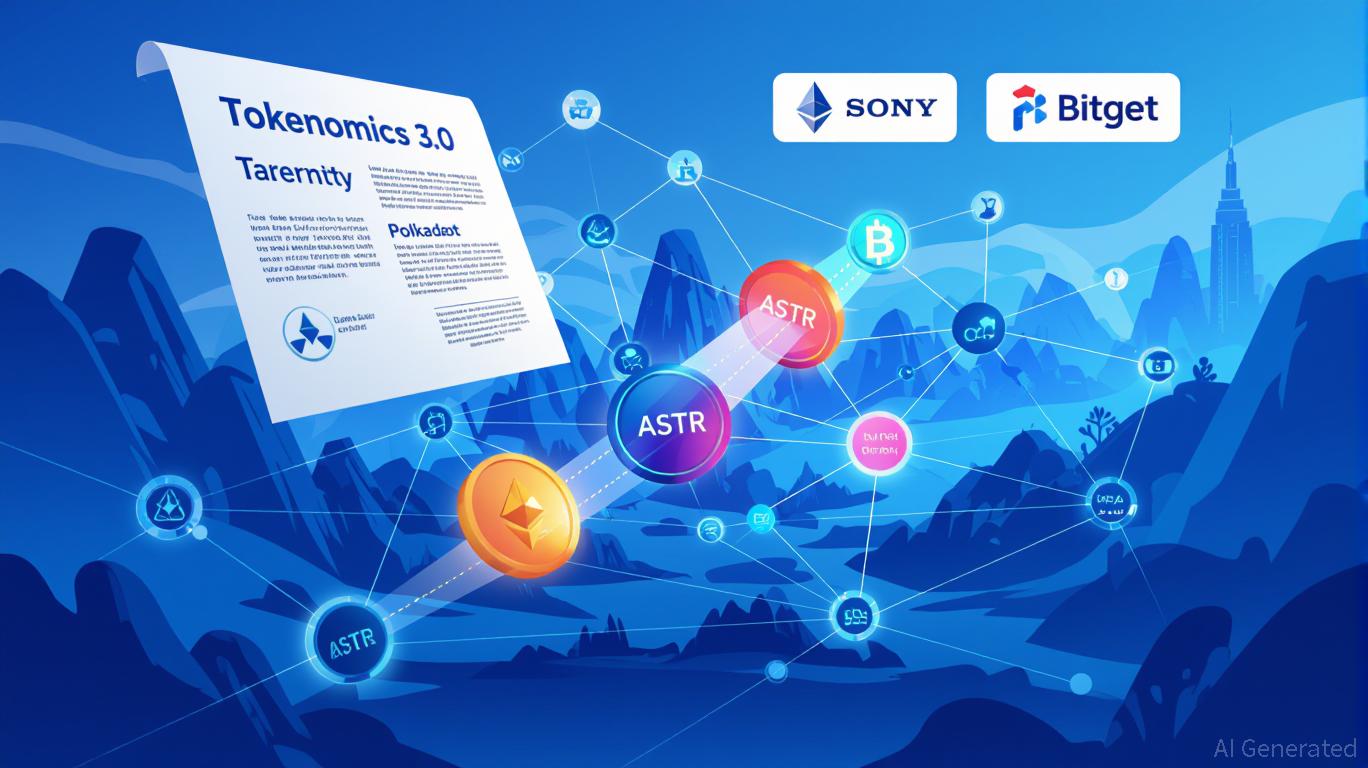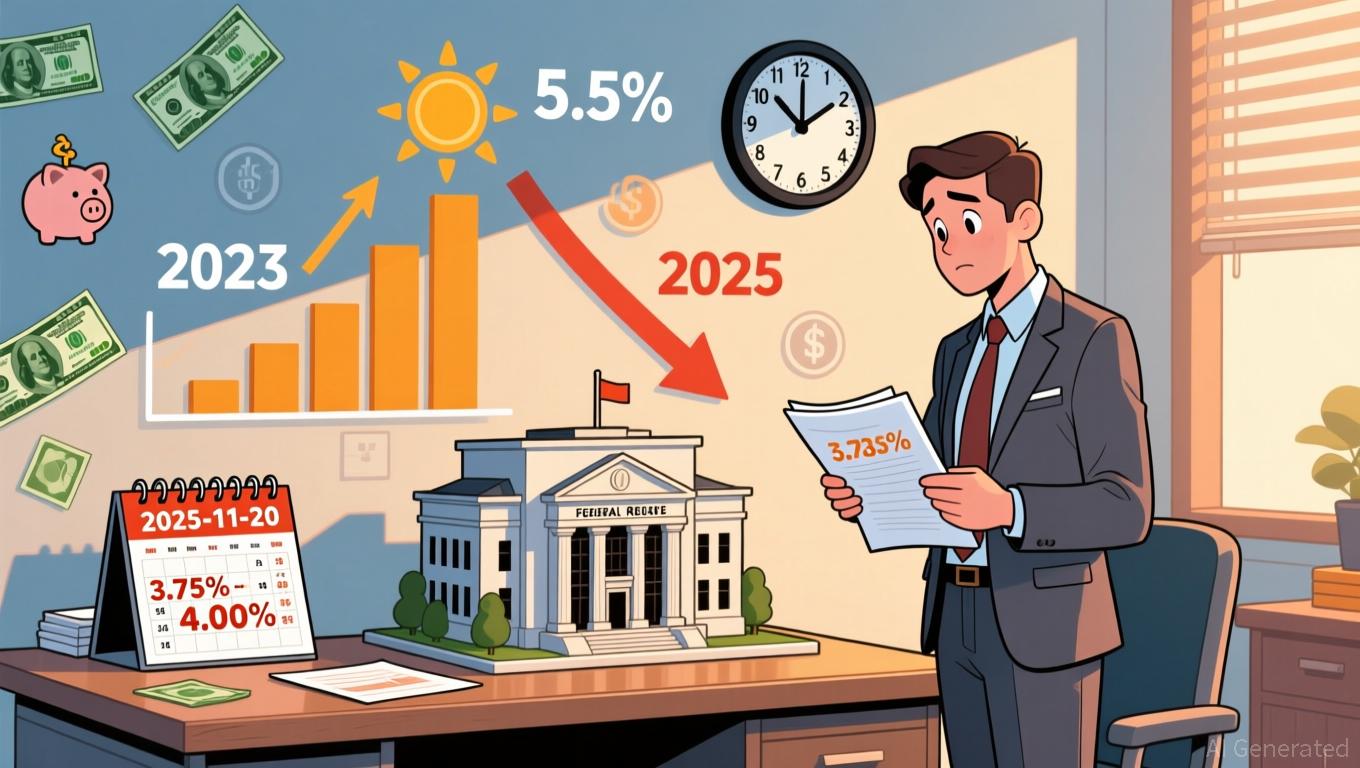Astar (ASTR) Price Rally: Is This a Milestone for Blockchain Connectivity?
- Astar (ASTR) surged 150% in Q3 2025 via strategic upgrades and ecosystem growth, leading multichain infrastructure. - Key upgrades include Plaza for cross-chain interoperability and Burndrop PoC, plus Tokenomics 3.0 with 10.5B ASTR cap. - Partnerships with Sony/Animoca and $3.16M institutional investment boost adoption; 20% Q3 active wallet growth. - Analysts project $0.120 by 2033, citing 300,000 TPS scalability and modular infrastructure vs. Cosmos .
Strategic Upgrades: Advancing Astar’s Cross-Chain Capabilities
Astar’s 2025 upgrades, part of its "Evolution Phase 2" plan, focus on boosting cross-chain connectivity. The addition of Plaza, a next-generation version of the
Alongside Plaza, the Burndrop Proof of Concept (PoC) lets ASTR holders burn tokens voluntarily in return for future Startale ecosystem tokens.

Ecosystem Expansion and Institutional Interest
Astar’s ecosystem is growing rapidly. Collaborations with major Web2 companies like Sony (through Soneium) and Animoca Brands are helping to connect Web2 and Web3, especially in the entertainment and gaming sectors. Projects such as Anime ID and Anime Art Fest are designed to bring millions of users into blockchain-powered experiences,
Institutional backing is also on the rise.
Tokenomics and Governance: Building for the Future
Astar’s updates to tokenomics and governance are crafted to meet institutional expectations.
Competitive Analysis: Astar Versus Cosmos
Although
Long-Term Investment Prospects: A Positive Outlook
Market experts anticipate strong growth for ASTR.
Conclusion: A Defining Moment for Blockchain Connectivity
The recent surge in Astar’s price is more than a temporary spike—it confirms the project’s strategic direction. By focusing on interoperability, preparing for institutional adoption, and ensuring sustainable tokenomics, Astar is reshaping the role of blockchain networks in a multichain environment. For those with a long-term perspective, the message is clear: ASTR’s ongoing upgrades and ecosystem development are not just technical achievements, but transformative changes that could secure its place as a frontrunner in the next wave of blockchain innovation.
Disclaimer: The content of this article solely reflects the author's opinion and does not represent the platform in any capacity. This article is not intended to serve as a reference for making investment decisions.
You may also like
Post-peak CD returns threatened by Fed reductions—investors hurry to lock in rates
- CD rates peaked at 4.20% APY in late 2025 but declined as Fed rate cuts reduced federal funds to 3.75%-4.00%. - Short-term 12-month CDs remain competitive at 3.92% APY, outperforming longer-term products amid expected further Fed cuts. - Analysts urge investors to lock in current rates before December's anticipated third cut, as 2025's three reductions follow 2024's three cuts. - Strategic allocation to high-APY CDs maximizes returns, with $100k in 12-month terms generating $3920 vs. $3600 in 24-month te

Bitcoin News Update: Federal Reserve's Shift to Dovish Stance Sparks Digital Asset Rally Amid Supply Constraints, BTCM's Second Phase Poised to Capitalize
- Fed ends quantitative tightening, boosting markets as Bitcoin Munari (BTCM) enters $0.22 Phase 2 presale. - Dovish pivot with inflation below 2% drives risk-on sentiment, pushing December rate cut odds above 70%. - BTCM's fixed-supply model (21M tokens) and 2,627% projected return align with scarcity-driven crypto trends. - Structured presale pricing ($0.10→$0.22) and Solana's $58M daily ETF inflows highlight institutional adoption.

Bitcoin News Update: Report Reveals Bitcoin’s Future Depends on Macroeconomic Transparency and Trust from Institutions
- Bitcoin's 36% October drop sparks debate over recovery potential amid institutional sell-offs and ETF divestment risks. - Institutional holders (1,000+ BTC) reduced exposure by 1.5%, contrasting retail exits, mirroring 2019-2020 redistribution patterns. - Key support at $89,400-$82,400 and Fed rate cut odds (69.3%) highlight macroeconomic influence on Bitcoin's risk-on/risk-off dynamics. - Whale accumulation (100-10,000 BTC) contrasts retail selling, but 1,000-10,000 BTC cohort distribution remains a bea

The Growing Interest in Socially Responsible Investing (SRI) within Legal and Public Interest Fields
- SRI is shifting toward education and legal sectors to address systemic inequities, merging financial returns with social impact. - UC Berkeley's Public Interest Scholars Program funds law students for public service, ensuring measurable societal benefits through accountability frameworks. - Digital tools and ETFs like ESGU/VFTAX enhance SRI transparency, enabling investors to track real-time social impact in education and legal equity initiatives. - Institutional commitments to IDEAA principles and partn
